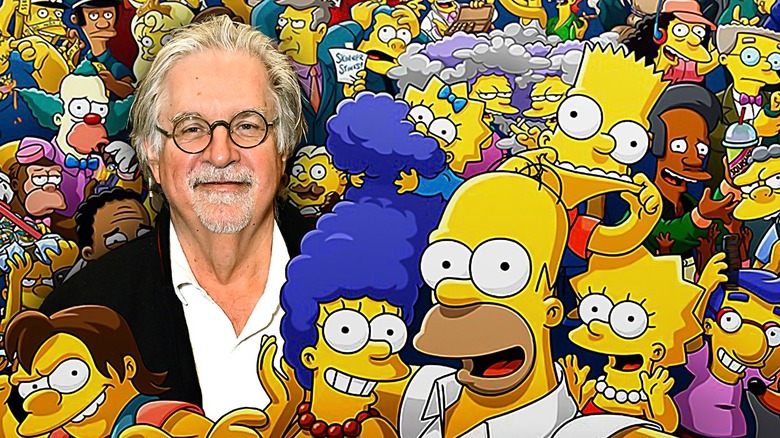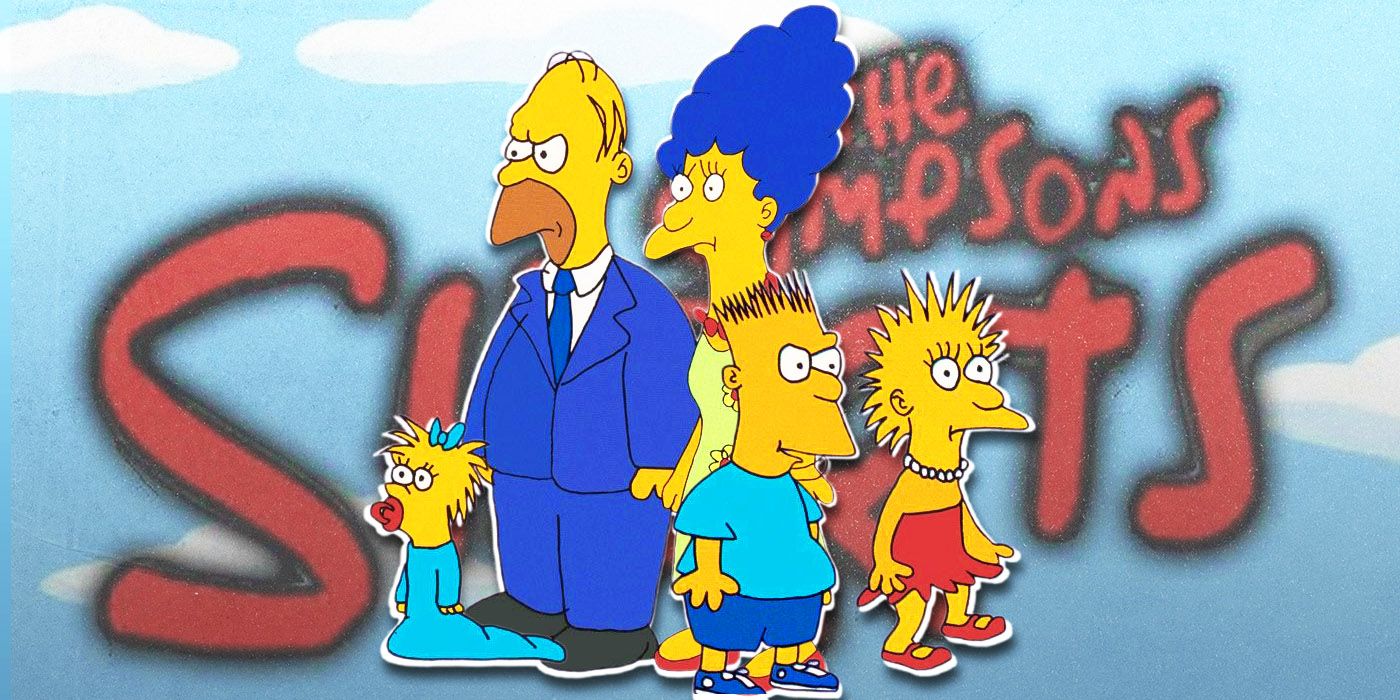Uncategorized
Who Created The Simpsons: The Genius Behind America’s Longest-Running Animated Series
For over three decades, The Simpsons has entertained millions of viewers worldwide with its satirical take on American life. But have you ever wondered who created The Simpsons and how this iconic animated series came to life? The answer lies with cartoonist Matt Groening, whose creative vision transformed a simple comic strip into television history.
Understanding the origins of The Simpsons not only satisfies curiosity but also reveals the fascinating journey of how one man’s artistic vision became a cultural phenomenon. From its humble beginnings as brief animated segments to becoming the longest-running American animated series, The Simpsons’ creation story is as entertaining as the show itself.

Matt Groening: The Creative Mind Behind The Simpsons
Matthew Abram Groening, born on February 15, 1954, in Portland, Oregon, is the brilliant mind who created The Simpsons. Long before Homer, Marge, Bart, Lisa, and Maggie became household names, Groening was already making waves in the world of alternative comics with his underground comic strip “Life in Hell.”
Groening’s artistic journey began during his college years at Evergreen State College in Olympia, Washington. After moving to Los Angeles in the late 1970s, he started creating “Life in Hell,” a weekly comic strip that appeared in alternative newspapers. This strip, featuring anthropomorphic rabbits dealing with life’s absurdities, showcased Groening’s unique brand of dark humor and social commentary.
The success of “Life in Hell” caught the attention of television producer James L. Brooks, who was working on a new variety show called “The Tracy Ullman Show.” Brooks was looking for short animated segments to fill time between sketches, and Groening’s distinctive art style and satirical edge made him the perfect candidate.

The Birth of The Simpsons on The Tracy Ullman Show
In 1987, James L. Brooks approached Matt Groening to create short animated segments for The Tracy Ullman Show. Initially, Brooks wanted to adapt “Life in Hell,” but Groening was hesitant to give up the rights to his successful comic strip. Instead, he quickly conceived an entirely new family of characters.
Groening famously created The Simpsons family in just 15 minutes while sitting in Brooks’ office lobby. He named the characters after his own family members: his father Homer, his mother Margaret (Marge), and his sisters Lisa and Patty. The mischievous son Bart was an anagram of “brat,” reflecting Groening’s own rebellious nature as a child.
These 30-second shorts, called “The Simpsons,” first appeared on The Tracy Ullman Show on April 19, 1987. The crude animation and distinctive character designs immediately captured viewers’ attention, despite the segments’ brief duration and limited production budget.

Early Character Development and Animation Style
The original Simpsons shorts featured much cruder animation than what fans know today. The characters had a more primitive look, with shakier lines and less refined designs. However, even in these early iterations, Groening’s distinctive artistic vision was evident.
The animation was produced by Klasky Csupo, a studio known for their unconventional animation techniques. The rough, hand-drawn quality gave The Simpsons a unique aesthetic that set it apart from other animated shows of the era, which typically featured more polished, Disney-style animation.
From Shorts to Series: The Evolution of The Simpsons
The popularity of The Simpsons shorts on The Tracy Ullman Show caught the attention of Fox Broadcasting Company. In 1989, Fox executives decided to expand the concept into a full-length animated series, making it one of the network’s first major primetime animated shows.
James L. Brooks and Sam Simon joined Groening as executive producers, bringing their television expertise to help develop the characters and storylines. Brooks, known for his work on “The Mary Tyler Moore Show” and “Taxi,” provided crucial guidance in adapting the short format into 30-minute episodes.
The first full-length episode, “Simpsons Roasting on an Open Fire,” aired on December 17, 1989. This Christmas special introduced audiences to the expanded world of Springfield and established many of the show’s core themes: family dynamics, social satire, and irreverent humor.

The Creative Team Behind the Series
While Matt Groening created The Simpsons, the show’s success resulted from collaborative efforts with talented writers, animators, and producers. Sam Simon played a crucial role in developing the show’s writing style and character personalities, while James L. Brooks brought his Emmy-winning television production experience.
The writing team included future television legends like Conan O’Brien, John Swartzwelder, and Al Jean. These writers helped establish The Simpsons’ signature blend of sophisticated humor, pop culture references, and social commentary that appeals to both children and adults.
The Simpsons’ Impact on Animation and Popular Culture
The Simpsons revolutionized television animation in ways that continue to influence the medium today. Before The Simpsons, prime-time animated shows were virtually non-existent, with animation largely relegated to Saturday morning children’s programming.
Groening’s creation proved that animated series could tackle complex social issues, political satire, and adult themes while maintaining broad appeal. The show’s success paved the way for other animated series like “Beavis and Butt-Head,” “South Park,” “Family Guy,” and “Rick and Morty.”
The series has won numerous awards, including 34 Emmy Awards, 34 Annie Awards, and a Peabody Award. In 2000, The Simpsons received a star on the Hollywood Walk of Fame, cementing its place in entertainment history.

Cultural Influence and Merchandising Success
The Simpsons’ cultural impact extends far beyond television. The show has generated billions of dollars in merchandise sales, from t-shirts and collectibles to video games and theme park attractions. At Simpsonsfanshop.com, fans can find extensive collections of Simpsons-themed merchandise celebrating Groening’s iconic characters.
The series has influenced language, with phrases like “D’oh!” entering common usage and being added to the Oxford English Dictionary. Characters like Homer Simpson have become cultural icons, referenced in everything from political speeches to academic studies.
Matt Groening’s Other Creative Projects
While The Simpsons remains Groening’s most famous creation, he has continued to innovate in animation and comics. In 1999, he created “Futurama,” a science-fiction animated series that ran for seven seasons and demonstrated his versatility beyond the domestic satire of The Simpsons.
“Futurama” showcased Groening’s ability to blend humor with complex storytelling, featuring time travel, alien civilizations, and philosophical themes. The show developed a devoted fanbase and proved that Groening’s creative talents extended beyond his Springfield universe.
More recently, Groening created “Disenchantment” for Netflix, a fantasy animated series that premiered in 2018. This medieval-themed show represents another departure from his previous work, demonstrating his continued evolution as a storyteller and animator.

The Production Process and Animation Evolution
Understanding who created The Simpsons involves recognizing the evolution in animation production that Groening oversaw. The series began with traditional hand-drawn animation but gradually incorporated digital techniques to improve efficiency and visual quality.
Initially, each episode took six to eight months to complete, with animation outsourced to studios in South Korea. The process involved multiple stages: script writing, voice recording, storyboarding, animation, and post-production. Groening maintained creative control throughout this process, ensuring that his original vision remained intact.
The show’s animation style has subtly evolved over its 35+ seasons, with characters becoming more refined and backgrounds more detailed. However, Groening has insisted on maintaining the distinctive look that made The Simpsons instantly recognizable.
Voice Acting and Character Development
Part of The Simpsons’ success stems from exceptional voice acting that brings Groening’s characters to life. The main voice cast, including Dan Castellaneta (Homer), Julie Kavner (Marge), Nancy Cartwright (Bart), Yeardley Smith (Lisa), and Hank Azaria, have remained largely consistent throughout the series’ run.
Groening worked closely with these voice actors to develop the characters’ personalities beyond their visual designs. The chemistry between voice actors helped create the believable family dynamics that anchor the show’s more outlandish storylines.
The Business Side of Creating The Simpsons
Matt Groening’s business acumen played a crucial role in The Simpsons’ longevity and profitability. Unlike many creators who sell their rights to studios, Groening retained significant ownership and creative control over his characters and storylines.
This decision proved financially brilliant, as The Simpsons has generated over $13 billion in global retail sales. The franchise includes everything from DVDs and streaming rights to merchandise and licensing deals. Groening’s percentage of these profits has made him one of the wealthiest creators in television history.
The show’s syndication deals alone are worth hundreds of millions of dollars, with episodes airing in over 190 countries worldwide. This global reach has introduced Groening’s characters to multiple generations of fans across different cultures and languages.
Licensing and Merchandising Strategy
Groening understood early on that The Simpsons’ characters had merchandising potential beyond the television screen. He worked with licensing partners to create products that maintained the show’s quality and humor while appealing to diverse audiences.
From collectible figurines to clothing lines, The Simpsons merchandise reflects the show’s broad appeal. Sites like Simpsonsfanshop.com offer fans authentic products that celebrate Groening’s creative legacy while supporting continued appreciation for the series.
Legacy and Continuing Influence
More than 35 years after Matt Groening created The Simpsons, the series continues to influence popular culture, animation, and television production. The show holds the record as the longest-running American animated series, American sitcom, and primetime scripted series.
Groening’s creation has inspired countless animators, writers, and producers to pursue careers in animation. Many successful animated series creators cite The Simpsons as a major influence on their work, demonstrating the lasting impact of Groening’s vision.
The series has also contributed to academic discourse, with universities offering courses analyzing The Simpsons’ social commentary, cultural significance, and artistic techniques. This scholarly attention validates Groening’s achievement in creating entertainment that functions on multiple intellectual levels.

Awards and Recognition
The Simpsons’ critical acclaim reflects the quality of Groening’s creation and the dedicated team that brings his vision to life. The series has received recognition from numerous organizations, including the Television Academy, the Annie Awards, and the Writers Guild of America.
In 2008, The Simpsons was listed as the greatest American television series of all time by Entertainment Weekly. Time magazine named it the best television series of the 20th century, cementing Groening’s place in entertainment history.
Frequently Asked Questions About The Simpsons Creator
When did Matt Groening create The Simpsons?
Matt Groening created The Simpsons in 1987 while sitting in James L. Brooks’ office lobby. The characters first appeared as shorts on The Tracy Ullman Show before becoming a full series in 1989.
Why did Matt Groening name the characters after his family?
Groening named most characters after his family members as a personal touch and because he needed names quickly when creating the concept. Homer was his father, Marge his mother, and Lisa and Patty his sisters. Bart is an anagram of “brat,” reflecting Groening’s own childhood personality.
What inspired Matt Groening to create The Simpsons?
Groening was inspired by his own family experiences and his observations of American suburban life. His earlier work on “Life in Hell” demonstrated his talent for satirizing everyday situations, which he applied to The Simpsons’ family dynamics.
How much money has Matt Groening made from The Simpsons?
While exact figures aren’t public, estimates suggest Groening’s net worth exceeds $600 million, primarily from The Simpsons royalties, merchandise sales, and syndication deals. His decision to retain ownership rights proved extremely lucrative.
“The Simpsons started as a rebellion against the wholesome family sitcoms of the 1980s. I wanted to create a family that was more realistic, with all the dysfunction and love that real families experience.” – Matt Groening
The Future of The Simpsons
As The Simpsons continues into its fourth decade, Matt Groening remains actively involved in maintaining the show’s quality and relevance. Recent seasons have addressed contemporary issues while preserving the timeless humor that made the series successful.
Disney’s acquisition of Fox has brought new resources and distribution opportunities for The Simpsons, ensuring that Groening’s creation will reach future generations through streaming platforms and international markets.
The continued popularity of Simpsons merchandise and collectibles demonstrates the enduring appeal of Groening’s characters. Fans can celebrate this legacy by exploring authentic products at Simpsonsfanshop.com, where the spirit of Springfield lives on through quality merchandise.
Conclusion: The Lasting Impact of Matt Groening’s Creation
Matt Groening’s creation of The Simpsons represents one of the most significant achievements in television history. From humble beginnings as 30-second shorts to becoming a global cultural phenomenon, The Simpsons has entertained billions of viewers while influencing countless creators and shaping popular culture.
Understanding who created The Simpsons reveals not just the story of one man’s artistic vision, but the collaborative effort required to bring complex animated storytelling to life. Groening’s ability to blend humor with social commentary, create memorable characters, and maintain creative control has established a template for successful animation that continues to inspire new generations of creators.
As The Simpsons continues to evolve and reach new audiences, Matt Groening’s legacy as a pioneer of animated television remains secure. His creation has proven that animation can be sophisticated, meaningful, and endlessly entertaininga testament to the power of creative vision and storytelling excellence.


